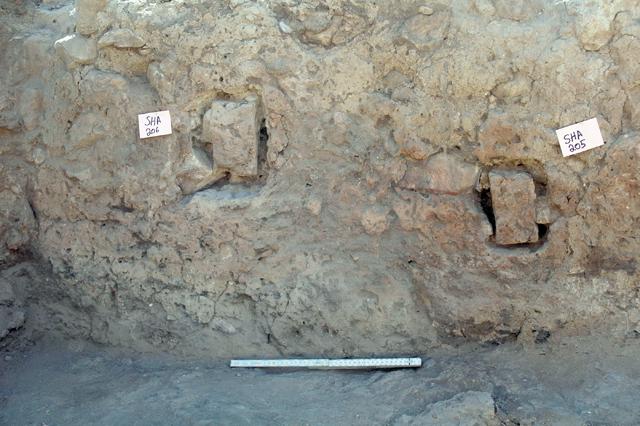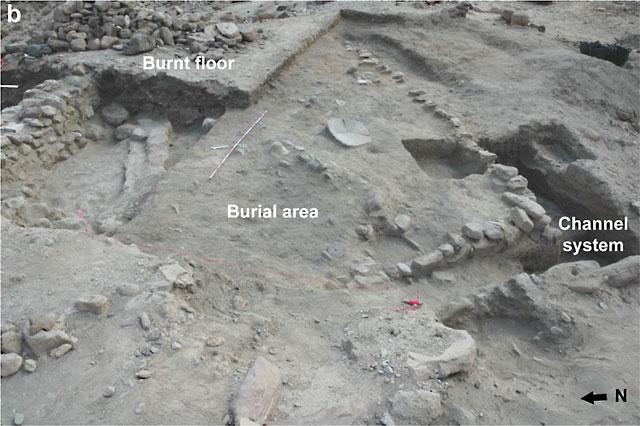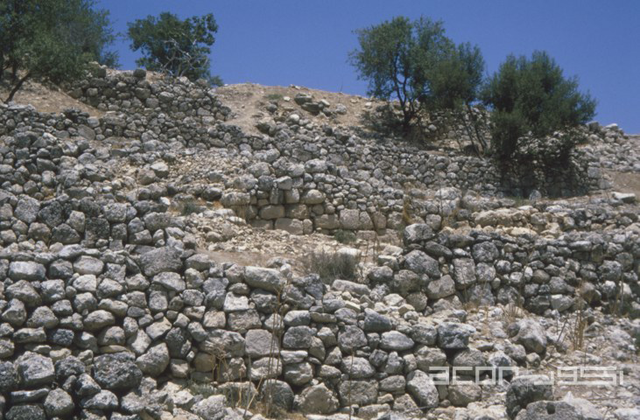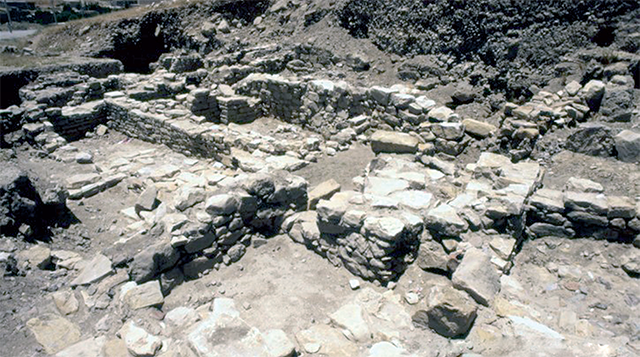You are here
Sharara witnessed hunter-gatherers’ transformation into early sedentary lifestyle — scholar
By Saeb Rawashdeh - Aug 13,2022 - Last updated at Aug 20,2022

A view of Sharara PPNA site in the southern Jordan (Photo courtesy of Sharara project)
IRBID — Communal buildings in Sharara, a site located in Wadi Al Hasa which overlooks the southern part of the Dead Sea, during Pre-Pottery Neolithic A period, connected people, according to a scholar.
During her presentation at the 15th International Conference on the History and Archaeology of Jordan in Irbid titled “Pre-Pottery Neolithic A [PPNA] Excavations at Sharara”, co-director of the Project Cheryl Makarewicz said that granaries, houses and domestic aspects are visible at the site.
Makarewicz noted that during the excavation they identified straight line of stones.
“As we continued observations, it was revealed that it was the top of a wall, and that we have trench features of both sides. The sides of the trench were made of a very thick plaster and there was a stairway to the ground,” Makarewicz said.
The research focused on a moment in human prehistory where some 10,000 years ago, hunter-gatherers started experimenting with plant agriculture and living in big sedentary communities, the archaeologist highlighted.
The research of the archaeological team investigates plant cultivation and storage, and how these practices transformed the Neolithic world.
Regarding mortuary practice at Sharara, burials were not standardised, particularly in southern Jordan, Makarewicz said, adding that the platform is filled with secondary burials.
“The important thing to emphasise here is that these secondary burials are not just sculls, but other kinds of bones,” Makarewicz noted.
According to the archaeologist, the way the deceased were buried was regulated by social practices.
As for the economy of the site, people experimented with barley cultivation while continuing to gather wild plants and hunt game such as ibex and gazelle, Makarewicz said.
“However, the location of Sharara in the steep and rocky mountains of the lower Wadi Hasa may have made growing cereals difficult,” she said, adding that house architecture suggested a community of hunter-foragers in the transitional stage to an early sedentary lifestyle.
Makarewicz said that one of the things which attracts scholars to Jordan, is “that it is always an adventure, without a set plan.”
Related Articles
AMMAN — Sharara is a Neolithic settlement located 10 kilometres east of the southern tip of the Dead Sea, in Wadi Hasa, and provides a route
AMMAN — The Jordan Valley covers approximately 104 km in length and five to 20 km in width.
AMMAN — The East Bank region is often considered less important to the emergence of farming societies of the Neolithic period when compared














